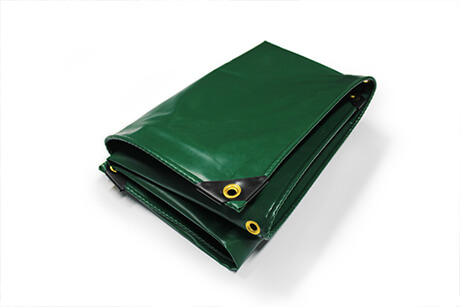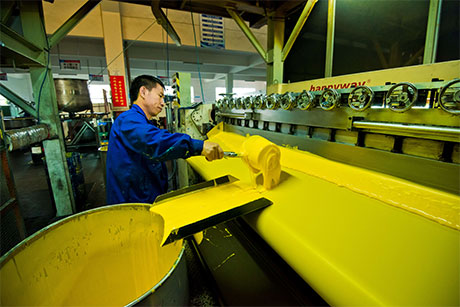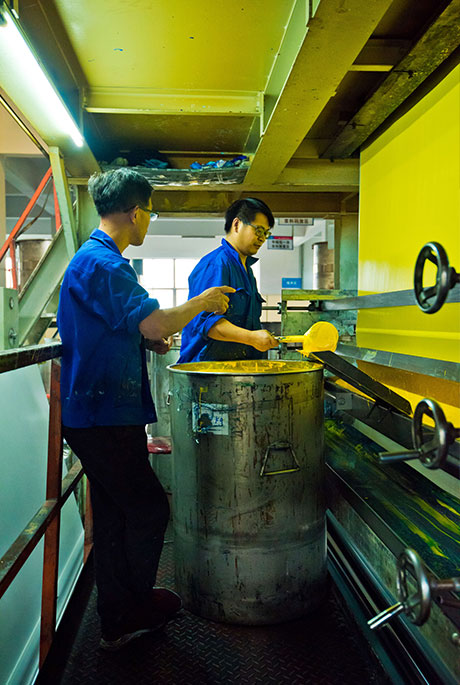Product Categories
How to distinguish the quality of tarpaulins? What are the characteristics of PVC-coated fabrics?


Identifying the quality of tarpaulins involves assessing several key factors. PVC-coated fabrics, especially PVC waterproof tarpaulins, are essential coverings in industries like transportation and warehousing. With features such as wind resistance, durability, and abrasion resistance, canvas materials are in high demand across various sectors. In recent years, PVC-coated fabrics have become widely used in applications ranging from automotive and marine covers to construction site tarps and camping tents, owing to their exceptional qualities.

PVC-coated fabrics stand out as top performers among tarpaulin materials due to their excellent resistance to mold, noticeable waterproofing, superior flexibility in low temperatures, high strength and tensile properties, resistance to corrosion and aging, and lightweight nature. They are manufactured using methods like heat sealing and sewing.

Assessing the quality of PVC-coated fabrics involves focusing on several aspects:
1. **Appearance**: High-quality PVC-coated fabrics exhibit a vibrant color with a glossy finish. One side is smooth, while the other may feature granular textures, indicating proper resin composition and temperature control during production. Lack of pinholes suggests high resin density, ensuring excellent resistance to aging and a longer lifespan.
2. **Tensile Strength**: Pay attention to the fabric's tensile strength, which is influenced by material composition and weaving techniques. Fabrics with higher yarn density generally have better tensile strength.
3. **Waterproof Performance**: Superior waterproofing is crucial. Absence of pinholes indicates good material quality, with high resin content and density contributing to enhanced waterproofing.
4. **Texture**: Despite appearing moderately thick, high-quality PVC-coated fabrics should feel soft to the touch. This softness is achieved through high resin content and superior processing techniques, eliminating any roughness.
5. **Production Process**: PVC-coated fabrics are typically produced using vertical machines, ensuring high-quality raw materials are used. The production process involves straightening and feeding fabric into the machine, applying PVC material on both sides, drying, trimming, cutting, and packaging. Vertical machines demand high-purity raw materials and produce slightly pricier but purer PVC-coated fabrics.


6. **Performance Characteristics**: PVC-coated fabrics are made of polyester filament as the base material, with PVC coating on both sides. They boast a smooth surface, vibrant color, and various properties including waterproofing, fire resistance, corrosion resistance, mold resistance, cold resistance, heat resistance, UV resistance, and aging resistance.
By considering these aspects, you can develop a discerning eye for selecting high-quality tarpaulins, enabling you to judge their quality at a glance.
You may also like
- Cheap Pvc Mesh Tarp Black Vinyl Mesh Tarp Dump Truck Tarp
- 18oz D-Ring Lumber Tarp for Flatbed Trailers cover
- 16' X 28' (4' Drop & Flap) Lightweight Flatbed Trailer Lumber Tarp - 14 Oz. Black Tarp
- Tarp End Dump 32 ft Black Mesh Heavy Duty PVC Coating Mesh Sheet
- Heavy Duty Black Knitted Nylon Mesh Tarp Sheet 60-70% Shade
- Fire Retardant PVC Clear Vinyl Tarp Crystal Clear PVC Tarpaulin
- PVC knife coating fabric raw material for truck cover-Sky blue
- 24' X 18' (8' Drop & Flap) Lightweight Flatbed Trailer Lumber Tarp - 14 Oz. Black Tarp
- Transparent Tarp Curtain PVC Tarpaulin Cover Fabric Clear PVC Vinyl Tarp
- Outdoor Waterproof Side Panels and Gazebo Side Sheets
Others also viewed
- Which Material is best for Tarpaulin?
- Is a Poly Tarp the Same As a Vinyl Tarp?
- What is PVC Tarps?
- How To Choose The Best PVC Tarpaulin Outside?
- The difference and pros and cons of polyethylene tarpaulin, PVC tarpaulin, and canvas tarpaulin.
- Which GSM is good in Tarpaulin?
- The Details Of The Correct Use Of Tarpaulin Tents
- Industrial fabric popular science series One---Surface Treated
- How to eliminate the static electricity of the pvc
- Performance indicators to be considered for the tarpaulin used to build a fast storage tent